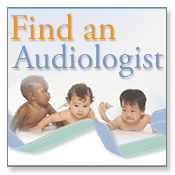Understanding Hearing Loss

Many different things can happen in the ear to cause a hearing loss.
Our ear and hearing are made up of many parts:
- The outer ear
- The middle ear
- The inner ear
- The ear (auditory) Nerve – The hearing (auditory) System pathway in the brain
These terms describe hearing loss where the part of the ear that is not working in a usual way:
- A conductive loss — hearing loss caused by something that stops sounds from getting through the outer or middle ear.
- A sensorineural loss — hearing loss that occurs when there is a problem in the way the inner ear or hearing nerve works.
- A mixed hearing loss — hearing loss that includes a conductive and a sensorineural hearing loss.
- Auditory Neuropathy Spectrum Disorder — Hearing loss that occurs when sound enters the ear normally, but because of damage to the inner ear or the hearing nerve, sound isn’t organized in a way that the brain can understand. For more information, visit the National Institute of Deafness and Other Communication Disorders.
These terms describe the degree or the amount of hearing loss a child has:
- Mild Hearing Loss — a person with a mild hearing loss may hear some speech sounds but soft sounds are hard to hear.
- Moderate Hearing Loss — a person with a moderate hearing loss may hear almost no speech when another person is talking at a normal level.
- Severe Hearing Loss — a person with severe hearing loss will hear no speech of a person talking at a normal level and only some loud sounds.
- Profound Hearing Loss — a person with a profound hearing loss will not hear any speech and only very loud sounds.
These terms describe when the hearing loss happened:
- Pre-lingual — the hearing loss occurred before the child learned to talk.
- Post-lingual — the hearing loss occurred after the child learned to talk.
These terms describe the side or sides on which the hearing loss occurs:
- Unilateral — there is a hearing loss in one ear.
- Bilateral — there is a hearing loss in both ears.
Parents and professionals will use these terms to describe a child’s unique type of hearing loss when talking to others.
If professionals and other parents use terms that you don’t understand, please ask questions.
- Page last reviewed: November 26, 2014
- Page last updated: November 26, 2014
- Content source:



 ShareCompartir
ShareCompartir